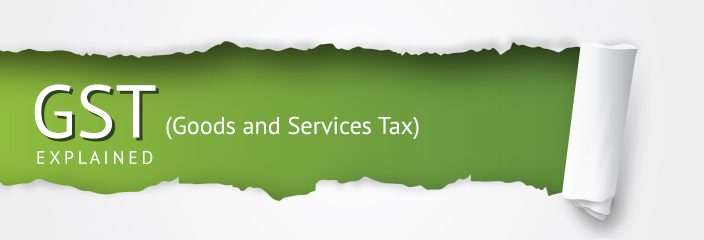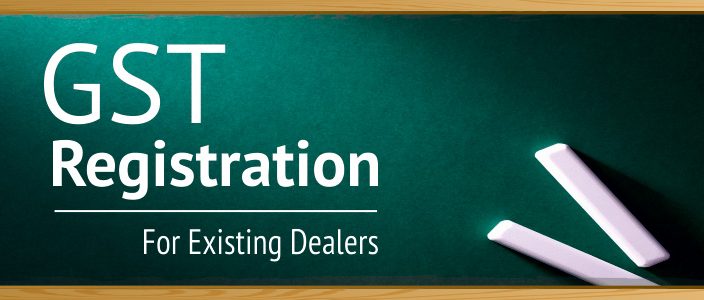
August 3rd, 2016 will be recorded as a red letter day in the history of Indian taxation due to the near unanimous passage of 122nd Constitutional Bill in Rajya Sabha, paving the way for roll-out of GST in India from 1st of April 2017. Goods and Service Tax Bill has significantly evolved over the past decade and is touted as the single largest tax reform in India since independence. It is estimated to boost GDP by 1.5 to 2%. ‘One India, One Tax’ will be the new reality with GST subsuming over ten indirect taxes and making India a common market. Apart from elimination of cascading effect, the benefits of simplified compliance, technological backing and uniform process across India will contribute significantly to ‘Ease of doing Business’. However, the success of a business will significantly depend on the ability to understand and adopt to this new reality as certain existing business practices will have to undergo changes.
Goods and Service Tax is a comprehensive tax levied on manufacture, sale and consumption of goods and services across India. GST is a Destination based Consumption tax, and the taxable event is Supply as against the existing taxable events of sale, manufacture or provision of service. Draft Model GST Law was made public in June 2016, and the government has sought public opinion on the same. It is high time that businesses, industry/trade bodies, professional associations and the like provide valid inputs at an early date, and ensure the final GST Law addresses all the concerns  to make the transition smooth.
Background
The indirect taxation regime in India has undergone many transformations over the past 5 to 6 decades. Introduction of MODVAT scheme in 1986, fungibility of credit between Excise and Service Tax (2004), rollout of VAT (2005 onwards) have over the years increased transparency in tax administration, reduced hassles to tax payers, and eliminated the cascading effect, thus benefitting the consumer. However, the federal structure of India has resulted in tax being administered by both Centre and State. Lack of facility to utilize credits across these two entities has resulted in partial cascading still being left in the system. Added to this, the burden of compliance has also increased due to involvement of multiple agencies. GST precisely addresses these concerns by driving uniformity across India through a single tax and ensuring an unrestricted flow of tax credit. Conceptually, GST is similar to VAT, meaning tax will be applied only on the value addition at each point in the supply chain.
Salient Features
Some of the salient features of GST are:
Registration:
GST Registration threshold is proposed at Rs 4 Lakh for NE states + Sikkim, and Rs 9 Lakh for Rest of India. However, the liability to pay tax will be only after crossing the threshold of Rs 5 Lakh for NE states + Sikkim and Rs 10 Lakhs for Rest of India. Approximately 7-8 million businesses are likely to be registered under GST. Small dealers with turnover below Rs 50 Lakh have the option of adopting the Composition scheme and pay flat ~1 to 4% tax on turnover.
Dual GST:
In consideration of the federal structure of India, Dual GST has been chosen as the apt model wherein tax would be jointly levied by both Centre and the states on supply of goods and services.
The components of Dual GST are:
- SGST: State GST
- CGST: Central GST
- IGST: Integrated GST
On intra-state transactions CGST+SGST will be applicable and on Interstate transactions, IGST will be applicable.
GST Rates:
There are likely to be 3 sets of rates as below:
- Merit Rate
- Standard Rate
- De-Merit Rate
There is also likely to be a lower rate for precious metals and zero-rate for essential goods.
Taxes Subsumed:
The taxes which will get subsumed under GST are:
| Subsumed in GST |
Not subsumed in GST |
| Central Excise |
Basic Customs duty |
| Service Tax |
Alcohol for human consumption |
| VAT / Sales Tax |
Petrol / Diesel / Aviation fuel / Natural Gas* |
| Entertainment Tax |
Stamp duty and Property tax |
| Luxury Tax |
Toll tax |
| Taxes on lottery |
Electricity Duty |
| Octroi and Entry Tax |
| Purchase tax |
*To be included only at a later notified date
ITC Utilization:
The manner of availing input tax credit for setoff of tax liability is defined as under:
| Input Tax Credit |
Set-off against liability of |
| CGST |
CGST and IGST (in that order) |
| SGST |
SGST and IGST (in that order) |
| IGST |
IGST, CGST, SGST (in that order) |
Please note that CGST and SGST cannot be set off against one another.
IT Infrastructure:
Goods and Service Tax Network or GSTN is a Not for Profit Sec 25/Section 8 company incorporated under the public-private partnership(private companies, central and state government are the stakeholders) to roll out the IT backbone (Backend and Frontend) and portal for meeting all the e-filing requirements of GST. This would be the nodal agency which would control all the processes, forms, and also the data of all the trade that happens in the country.
GST Council:
The council to be formed within 60 days of getting presidential assent, would consist of 2/3rd representation of states and 1/3rd representation of Centre. The GST Council will take all decisions regarding tax rates, dispute resolution, exemptions and so on. Recommendations of the GST Council (75% votes) will be binding on the Centre and states.
Business Process
Registration:
Existing dealers would be auto-migrated and given a 15-digit PAN based GSTIN with following structure.
| State Code |
PAN |
Entity Code |
Blank |
Check Digit |
| 1 |
2 |
3 |
4 |
5 |
6 |
7 |
8 |
9 |
10 |
11 |
12 |
13 |
14 |
15 |
The entity code will be applicable for taxpayers having multiple business verticals within the state.
Returns:
The GST regime introduces the following changes:
- The GST regime requires all businesses to mandatorily file monthly returns along with the requisite quarterly or annual returns. Even businesses which now file returns quarterly or half-yearly (such as returns for service tax etc.) now need to file returns every month.
- There will now be ‘3 compliance events every month’ compared to 1 event today. This means, businesses will now need to comply with the requirements of filing GSTR- 1, GSTR-2 and GSTR- 3 (as mentioned below) as against filing 1 return today.
- The first compliance event (filing GSTR-1) has a due date of 10th of the subsequent month as against the deadline of 20th in the current VAT regime.
- Composition scheme will no longer be a favorable option since returns need to be filed quarterly and the details in those returns need to be filed relating to purchases, though sales would be lump sum like earlier. Another big deterrent in the scheme would be non availability of input credit to the chain below which would increase the selling price for the composite dealers. This would mean that businesses would reduce their purchases from these dealers.
Regular Dealer: Monthly filing
- GSTR-1: Upload all sale invoices (By 10th)
- GSTR-2: Accept the auto-populated counterparty sales as your purchase, and add any missing purchases (By 15th)
- GSTR-3: Submit the auto-populated GSTR-3 by 20th
Composition Dealer: Quarterly filing
- GSTR-4: Submit by 18th after quarter-end
GSTR-8: Annual Return for both Regular and Composition by 31st Dec of subsequent year.
Payments:
- Mandatory e-payment for amount > Rs 10,000
- Online: NEFT/RTGS/IMPS
- Offline: Cash/Cheque/DD/NEFT/RTGS etc.
- Challan is auto-populated, and can be downloaded
Refunds:
Refund process will be automated and wherever applicable 80% refund will be granted provisionally when applied without scrutiny.
Major Impact Areas
Principal areas of impact for business will be:
- Adoption of Technology is imperative: As all the processes will be online, and return filing is of granular nature (invoice-wise), the taxpayer will have to adopt suitable technology to ensure efficiency and effectiveness. Unlike earlier, paper filing will not be an option.
- Access to Pan-India market: Intra-state and interstate trades would become tax neutral, and the whole of  India will open up as a market for both sourcing vendors and customers customers without hassles of compliance.
- Cash flow planning: Input tax credit on purchase will be provided only provisionally during return filing, and will be confirmed only after corresponding sale has been uploaded and after the liability is discharged by supplier. Hence, cash flows WILL get impacted in case of mismatch. As any supply would be taxable, branch transfers would result in tax liability leading to cash blockage. GST will also be applicable on advances received and reverse charge is extended to goods as well. Businesses will need to rethink how to effectively do business and structure deals.
- Easier Compliance:Â GST requires businesses to provide granular level of data (invoice-wise), that needs to be reported with HSN codes. The good news is that compliance is going to get easier with GST replacing most of the prevalent indirect taxes and with the support of technology. With GST, the government has shifted its burden of following up with vendors who have not uploaded their returns by cutting out the input credit.
- Branch / Supply chain re-engineering: Businesses having multi-state presence due to tax considerations (to avail concessional CST rate) need to re-plan their warehouse and branch networks and locate them nearer to markets rather than state-wise.
- Pricing strategy: Due to elimination of cascading effect, prices of products are likely to come down. Hence, businesses need to re-align to the new realities in procurement and sale.
- Re-negotiate contracts: Work contracts and other multi-year supply deals have to be renegotiated to absorb GST rates. As tax would be payable on advance, such conditions need a relook.Â
What Next?
With the passage of the 122nd constitutional Amendment Bill in Rajya Sabha, the immediate next steps are:
- As this is a constitutional amendment, a minimum of 15 state assemblies also need to ratify the bill.
- Presidential assent to the bill and formation of GST council within the next 60 days from date of obtaining assent, is required.
- Passing of CGST and IGST Bills (probably as Money Bill) in winter session of parliament and of SGST Bill in 29 state assemblies.
- Rollout of GST Network by January 2017.
The tasks look daunting, yet achievable.
What next for all of us
With 1st of April 2017 being the likely date for launch of GST, the taxpayer needs to take several preparatory steps in this direction. The transition will be the key for having a clean opening balance to start with.
- Input tax credit (in returns/inputs/capital goods) from current regime(CENVAT, VAT) will be carried forward to GST(CGST, SGST). Hence, it is imperative to keep the books updated. It helps companies during assessment as only at that time the number will get picked up and if trail/clarity is not available businesses will go through a lot of financial and non-financial pain.
- All the accounting and party masters in ERP need to be kept updated with statutory details filled-in, such that transition to GST is smooth.








